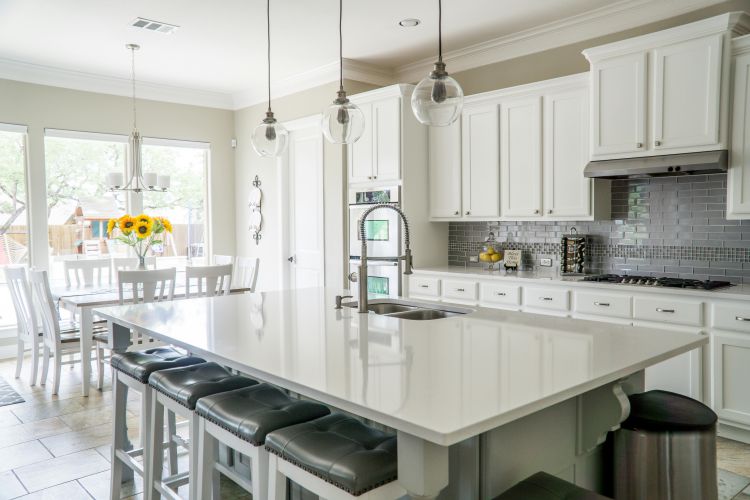Scrolling through Pinterest can feel like walking through a dream. Picture-perfect kitchens, cozy reading corners, and spa-style bathrooms are everywhere. But here’s the thing: your home isn’t a photo shoot. It’s where you live, work, eat, rest, and do all the messy, real-life things that don’t fit into a curated square.
Remodeling your home shouldn’t be about copying trends. It should be about making your space work for you. A good remodel looks great—but more importantly, it feels right. It fits your habits, your routines, and your comfort. If you’re planning changes to your home, here are a few ideas to guide you beyond Pinterest and into something that truly fits your lifestyle.
Start With Your Real Day-to-Day Needs
Before you get caught up in color swatches and trendy tile, take a step back. Ask yourself how you actually use each room. Do you cook often or grab takeout most nights? Do you need a quiet workspace, or would a larger dining area be more helpful? Maybe your mornings are hectic, and your bathroom needs better flow and storage to get everyone out the door on time.
Thinking this way helps you plan changes that make sense. It’s not about copying a layout you saw online—it’s about solving real problems in your home. This type of thinking gives you a strong foundation before you dive into design choices.
When you’re ready to move forward, working with experienced residential remodeling contractors makes it easier to turn practical ideas into well-executed plans. Instead of guessing what might work, you can collaborate on layouts that fit your habits. Whether it’s improving storage, changing the traffic flow, or updating the entire kitchen footprint, having the right team on board gives you more confidence in the decisions you make.
They can also help you avoid costly mistakes and offer suggestions you might not have considered, all while keeping your lifestyle and budget in focus.
Choose What Feels Right, Not Just What Looks Good
A beautiful room that’s uncomfortable won’t get used to. That trendy velvet couch might look amazing in pictures, but if you can’t relax on it at the end of the day, what’s the point?
Focus on comfort when choosing materials, furniture, and layouts. Pick chairs that support your back. Choose sofas you can sink into after a long day. Test out lighting that matches your routines—bright for reading, soft for evenings. Don’t rely solely on what’s trending in decor. Think about how you want the room to feel when you’re in it.
Think about flooring, too. Hardwood might look great, but if you’ve got kids or pets, maybe you need something more durable and low-maintenance. There are more stylish, practical flooring options now than ever before. Laminate, luxury vinyl, and treated wood look just as good and handle real life a whole lot better.
Smart Storage = Less Stress
Pinterest homes are often spotless and minimal. But real homes have stuff. And that stuff needs somewhere to go.
Instead of trying to live up to unrealistic standards, plan for storage that fits your needs. That could mean built-in shelves, hidden drawers, or storage benches. Even your staircase can double as storage space with a little creativity.
Take a walk through your home and notice what’s always cluttered. Do shoes pile up near the door? Is your pantry bursting? Does your bathroom lack towel storage? Fixing these pain points will instantly make your home feel more organized and peaceful.
You’ll also free up visible space, which makes your home feel bigger without knocking down any walls.
Make Your Layout Work for You
A common mistake people make is forcing trendy layouts into homes that weren’t built for them. Open concept sounds nice, but not every home benefits from removing walls. Sometimes, it can make a space feel chaotic or echoey.
Think about how you and your family move through the house. Do you bump into each other in the kitchen? Is the hallway too tight when guests are over? Do you avoid certain rooms because they feel closed off or awkward?
These are all signs your layout might need adjusting. That doesn’t always mean major changes—it could be as simple as rethinking furniture placement or widening a doorway.
Flow matters. You should be able to move through your home without dodging furniture or squeezing past counters. When your layout makes sense, everything feels easier and more natural.
Let Your Home Reflect You
Trends come and go, but your home should always feel like yours.
That doesn’t mean every room needs to be bold or unique. It just means you should feel comfortable and at ease in every space. If you love color, go for it. If you prefer neutral tones, that’s okay too.
You can add personality through small touches like artwork, wallpaper, accent walls, or custom shelving. Maybe you want a reading nook under the stairs or a bench by the window. These little changes can make a space feel personal without overdoing it.
The key is to pick things because you like them, not just because they’re popular online. Don’t feel pressured to follow every trend. Your home should grow with you, not with whatever’s trending this month.
Also, don’t be afraid to mix styles. It’s okay to have a modern kitchen and a cozy, vintage-inspired bedroom. You live in your whole house—make sure each room feels right for the way you use it.
Pinterest can be a great place to get inspired, but it shouldn’t set the rules for your remodel. What works in a picture might not work in real life—and that’s okay.
Focus on what you actually need, how you live, and what feels right. When you start there, your remodel won’t just look good—it’ll work beautifully day after day. From smart layouts to thoughtful storage to personalized design, a lifestyle-based approach leads to a home that’s both stylish and functional.
And at the end of the day, that’s what really matters.

